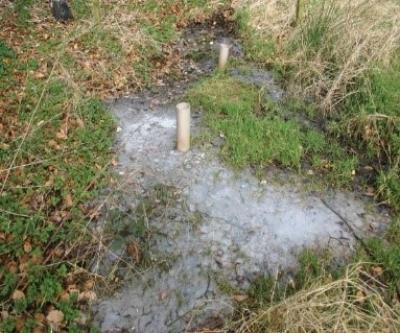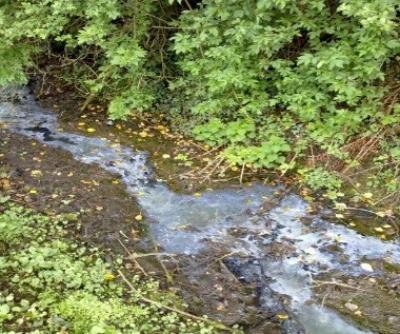The national inspection system started in 2013. Its purpose is to protect human health and the environment from the risks from septic tank systems. Local authorities inspect over 1,000 systems each year.
What to expect from an inspection
Planning and reporting inspections
Inspections of septic tanks and other domestic waste water treatment systems are done by City and County Council staff. They complete a specific training course and are appointed by the EPA. They carry a certificate of appointment and identification which they will show to the homeowner if requested.
Inspections are allocated to each City and County Council under the National Inspection Plan (see below). While they are focused on high risk areas, they are completed in all areas of the country.
Homeowners get at least 10 working days advance notice of the inspection. They do not have to be present but most people prefer to be there so they can hear about any issues. No access to the house itself is required.
Inspections will check that:
The inspector will inform the home owner of the results of the inspection:
If the home owner does not agree with the findings, they can request a re-inspection at a cost of €20.
The EPA coordinates inspections through the National Inspection Plan. Inspections are allocated across the country with the greatest focus on areas where there is the most risk to groundwater, surface water or human health. The system uses the Geodirectory which includes all houses in Ireland, so everyone has a chance of being picked. Priority is given to non-registered systems in high-risk areas where possible, so you may have a greater chance of inspection if you do not register. The current plan is the National Inspection Plan 2022-2026 and previous plans are also available.
The EPA provides a national overview of inspection results. The latest report is Domestic Waste Water Treatment Systems – Inspections and Enforcement 2022 and previous years reports are also available.
Septic tank inspections show that typically half fail with a quarter being a risk to human health or the environment. Many issues can be addressed through simple maintenance and de-sludging. However, in other cases, septic tank systems have serious structural problems that require repair or replacement.
Septic tank systems requiring repair or replacement may be identified by City and County Councils through inspections under the National Inspection Plan, River Basin Management Plan work or in investigating complaints. In all these instances, the homeowner will be made aware of the issues by the Council. However, many homeowners will be aware of issues and want to deal with them on their own initiative to ensure they protect the health of their family, the environment and comply with legal requirements.
What standards do I need to meet?
What if I am concerned about my neighbour’s septic tank system?
What should I do if my septic tank system is flooded?
These are some of the signs that a septic tank system is not working properly:
If problems are persistent, get a professional to assess the system to determine what repairs or remediation is required.


City and County Councils are the main point of contact for home owners in relation to septic tank systems. They are responsible for:
The EPA has published guidance on the Remediation and replacement of Domestic Waste Water Treatment Systems.
Grants of 85% up to a maximum of €12,000 are available under the following grant schemes:
Routine maintenance, servicing or de-sludging do not qualify for grants.
Details of Terms & Conditions and the map for High Status Objective Catchment Areas are available from the Department of Housing, Planning and Local Government.
Contact your City or County Council Rural Water Section if you require further information or wish to enquire about an application.
Septic tank systems must not be a risk to human health or the environment and must meet the requirements in the Domestic Waste Water Treatment Systems Regulations, S.I. 223 of 2012. The remediation solution should be such that it embraces best practice. Remediation of existing septic tank systems may have regard to the techniques, technologies and solutions set out in the Code of Practice but it is not bound by the full requirements of the code. The waste water professional should demonstrate that the proposed solution will result in protection of human health and the environment. The professional should work with the City or County Council and the homeowner to come up with the cost-effective solution for the site having regard to the requirements to protect human health and the environment.
If you are concerned about a neighbouring septic tank system and are not in a position to resolve it with them, contact the environment section of your City or County Council. If the system is potentially contaminating your well, contact the local Environmental Health Officer (EHO) also.
Section 70 of the Water Services Act, 2007 gives people the right to complain to the District Court if they are affected by the failure of another person to meet the duty of care requirements of that section.
If possible, the system should not be used until flooding subsides below the level of the tank. Do not enter flood waters as manholes may have been dislodged and the flood water will be contaminated. There may also be electrical risks if the system has an electrical supply, e.g. pumps or mechanical packaged plants.
After the flooding subsides, replace any dislodged manhole covers and check the system for any external signs of damage such as settlement, ponding of waste water, overflowing or blocked drains. Many systems will be robust and can be recovered and usable after a flood. If you suspect damage, or if your system relies on electrical parts such as pumps, have the entire system assessed by a professional service engineer. Due to the potential for toxic gases in all septic systems, any servicing, cleaning, repairs, internal damage assessments and emptying/pumping must be carried out by trained and experienced specialists.
Make sure that any nearby private wells are checked and disinfected prior to use by following the EPA advice for private well owners on what to do after flooding.